The Cadet Warfighter Instructor Course enhances basic warfighting skills
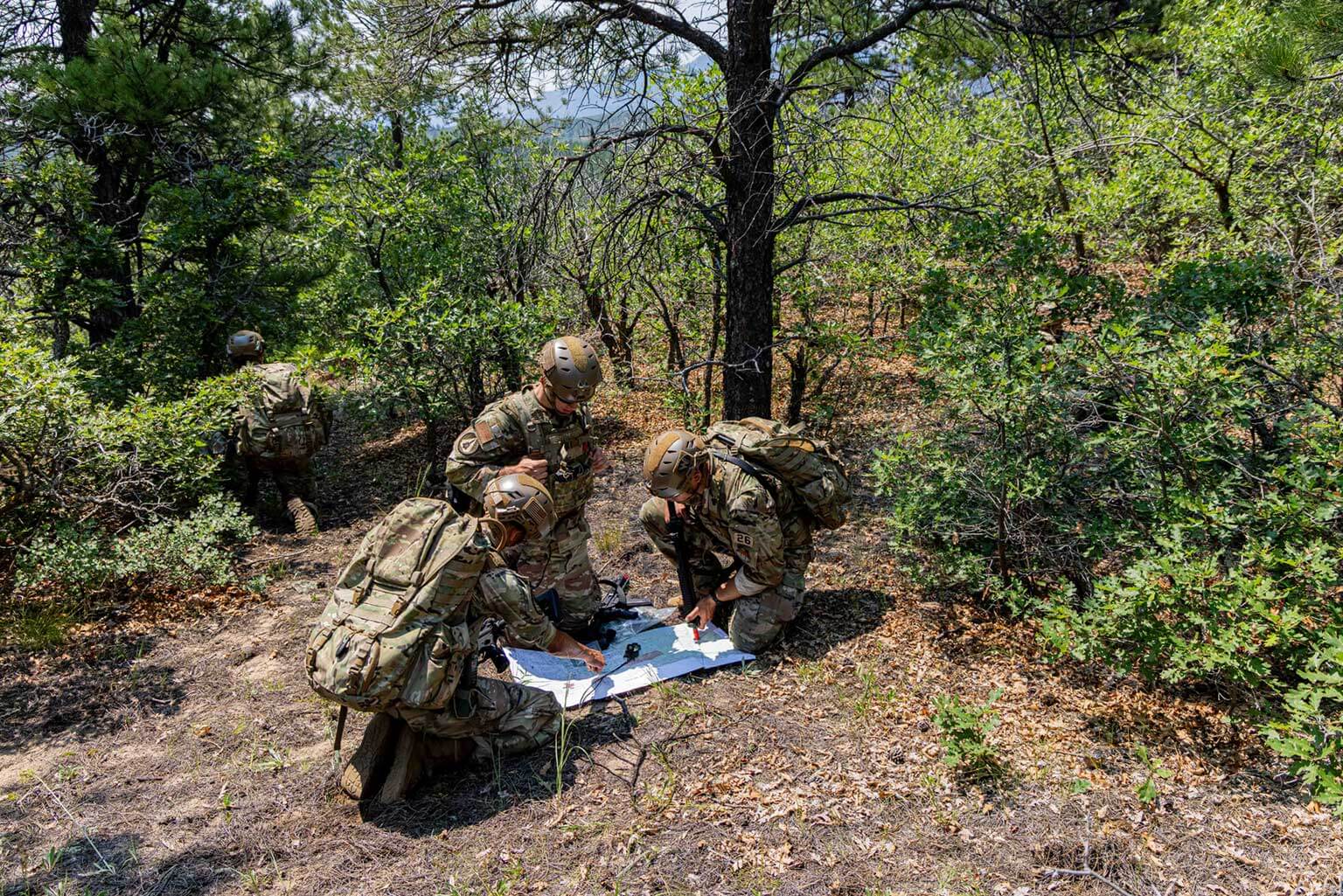
U.S. Air Force Academy upper-class cadets conduct a map reconnaissance of a potential ambush site during the Cadet Warfighter Instructor Course at the U.S. Air Force Academy, Colo., July 31, 2025. This course gives cadet instructors the skills and confidence to train underclassmen cadets in basic warfighting to improve the quality of military training at the Academy. (U.S. Air Force photo by Trevor Cokley)
By Sonie Rathbun
U.S. Air Force Academy Strategic Communications
U.S. AIR FORCE ACADEMY, Colo. – The U.S. Air Force Academy recently concluded its inaugural Cadet Warfighter Instructor Course (CWIC), an 11-day program held from July 22 to August 1, 2025. This new addition to the Cadet Military Education and Training Plan gives cadet instructors the tools to teach lower-class cadets basic warfighting skills at the individual and small-unit levels.
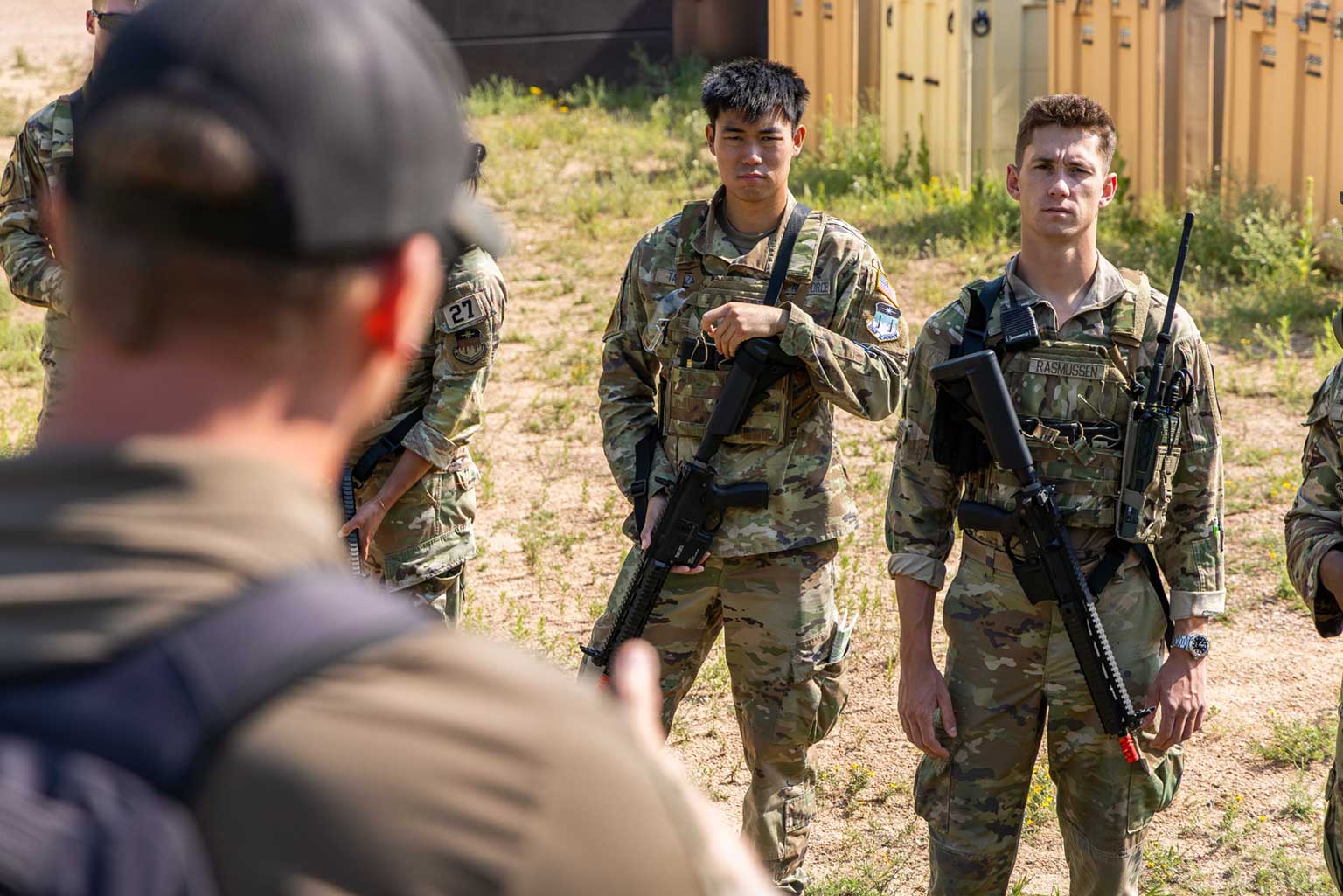
A U.S. Army Soldier from Charlie Company, 3rd Battalion, 10th Special Forces Group, instructs Cadet 1st Class Neo Takazawa and Cadet 2nd Class Henry Rasmussen on small-unit tactics during the Cadet Warfighter Instructor Course at the U.S. Air Force Academy, Colo., on July 31, 2025. Using Army Green Berets to coach and mentor upper-class cadets on the required skills to train basic warfighting skills to underclassmen cadets will improve the quality of future military training at the Academy. (U.S. Air Force photo by Trevor Cokley)
“Train the trainer”: A vital requirement
CWIC was established to offer more comprehensive training for cadet instructors. Major James Moore, a course planner, describes CWIC’s goal as “bridging the gap between foundational knowledge and operational realities, ensuring our cadet trainers can impart vital knowledge and skills to their fellow cadets at the squad level.”
The impact of this training is already being felt by cadets like 2nd Class Micaela Martz, who served as a squad leader during a squad-level situational training exercise (SQD STX) and emphasized the program’s future impact.
“During CWIC, we were taught to be adaptable and think critically under pressure,” said Martz. “CWIC has helped us become more effective instructors and leaders. This training will help us better teach the Cadet Wing foundational warfighter skills, better preparing us to fight and win our Nation’s wars once we earn our commissions.”
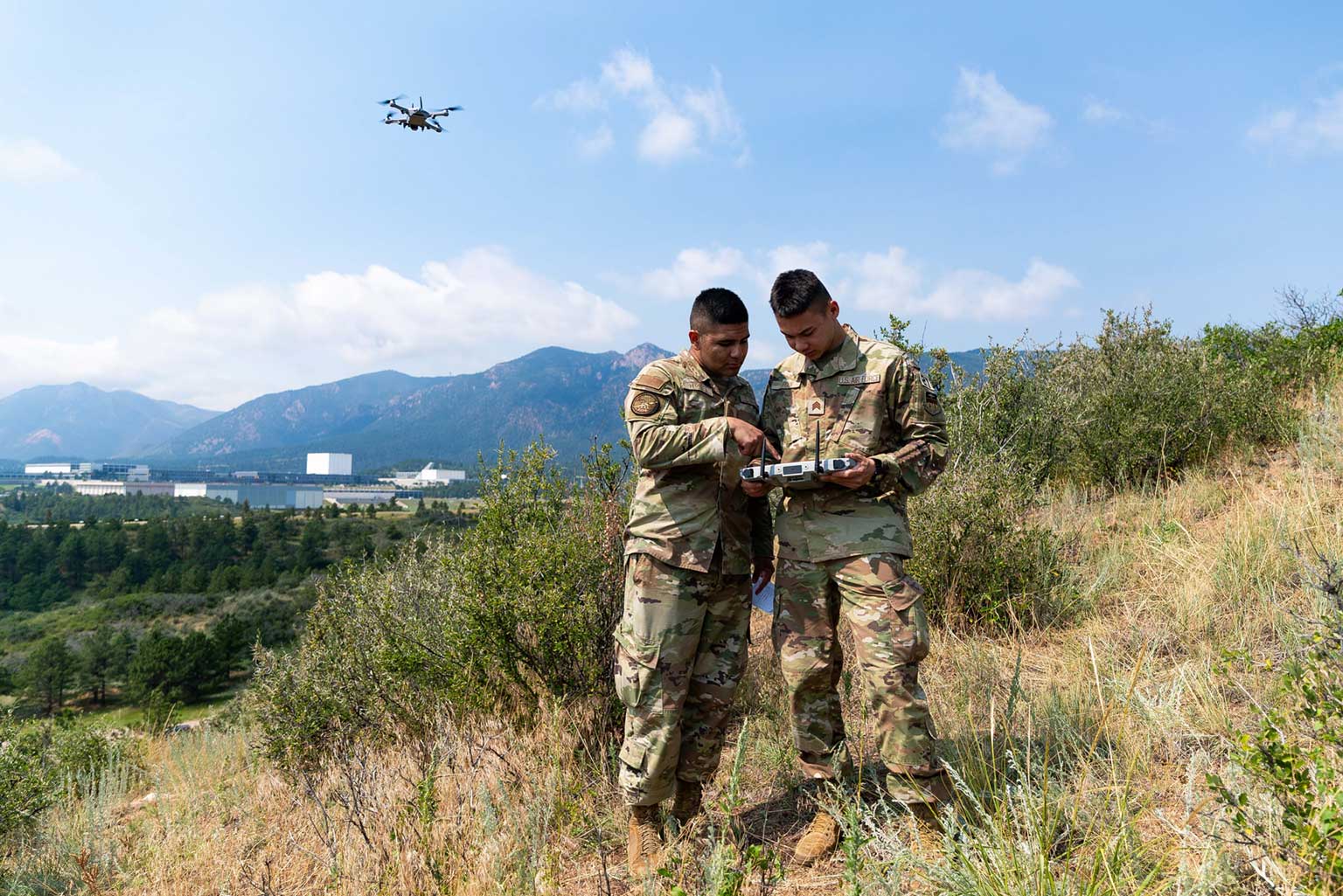
Cadet 2nd Class Angel Herrera and Cadet 2nd Class Jason Poon conduct aerial reconnaissance using a small Unmanned Aerial System during the Cadet Warfighter Instructor Course at the U.S. Air Force Academy, Colo., on July 31, 2025. This course gives cadet instructors the skills and confidence to train underclassmen cadets in basic warfighting skills to help improve the quality of future military training at the Academy. (U.S. Air Force photo by Ray Bahner)
CWIC module breakdown
The program was structured around several key modules, mirroring the core principles of ground warfare.
- Shoot, Move, Communicate: This module focused on warfighting tasks, squad-level tactics, and troop-leading procedures. It concluded with a practical application of what was learned at the squad level, utilizing Airsoft simulations.
- Medicate: Cadets received instruction on Tactical Combat Casualty Care (TCCC) skills and Chemical, Biological, Radiological, and Nuclear (CBRN) preparedness.
- Automate: This section provided comprehensive instruction on using small Unmanned Aerial Systems (sUAS) to integrate modern battlefield tools into foundational skills.
Moore explained the modules were designed to build foundational warfighter competencies. “From honing small-arms tactics and troop-leading procedures to mastering lifesaving TCCC and CBRN tasks, and integrating modern battlefield tools with sUAS, we provided a holistic and practical foundation for our cadet trainers to train their peers,” said Moore.
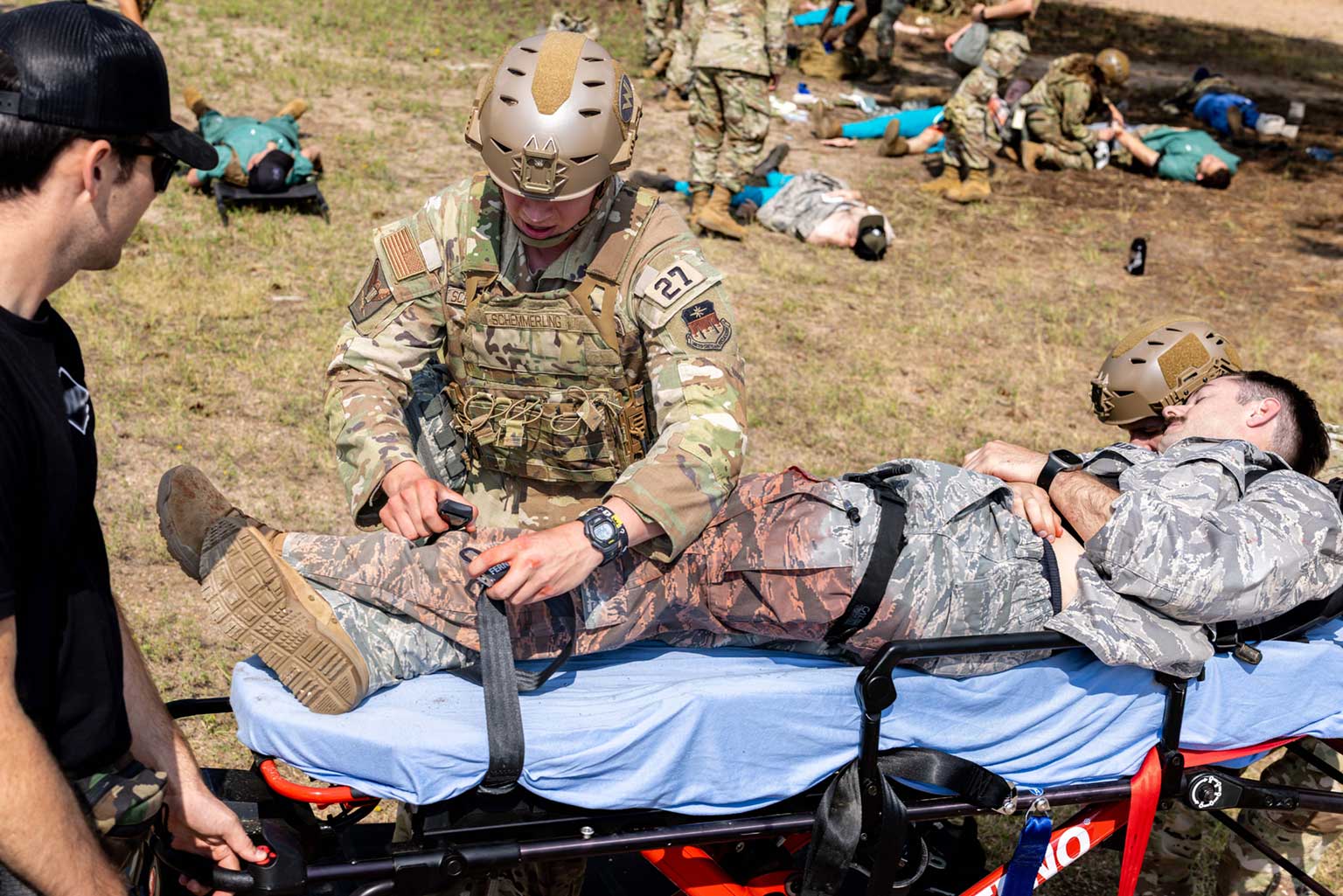
A U.S. Army Soldier from Charlie Company, 3rd Battalion, 10th Special Forces Group, observes U.S. Air Force Academy Cadet 2nd Class Tristan Schemmerling’s response to a simulated mass-casualty event at the U.S. Air Force Academy, Colorado, July 31, 2025. This training scenario allowed Army Green Berets to coach upper-class cadets on the required skills to train basic warfighting skills to underclassmen cadets. (U.S. Air Force photo by Jonathan Suni)
Green Berets: Ideal instructors for foundational skills
The decision to use U.S. Army Green Berets as instructors was deliberate due to their expertise, honed through rigorous training and extensive real-world combat experience at the tactical level.
“What differentiates and distinguishes Green Berets from other special operations units is that we are primarily combat trainers and advisors,” said U.S. Army Maj. Tom Boehm, commander, Charlie Company, 3rd Battalion, 10th Special Forces Group. “We must be able to take someone with no military experience and train them through a deliberate instruction program to become an effective Soldier.”
Their instruction ensures cadets are better equipped to train other cadets.
“Working with cadets who have never been exposed to this stuff makes our Green Beret trainers much better at their jobs,” said Boehm. “It also ties into the ‘train the trainer’ methodology they’re employing here at the Academy—we’re training upper-class cadets to teach these exact lessons to underclassmen cadets in future training iterations.”
Martz emphasized the training’s transformative nature. She believes the training was enhanced through the participation and guidance of the instructors from the 10th Special Forces Group.
“I enjoyed learning from the Green Berets,” said Martz. “I felt like they brought professionalism, and all the cadets around me were really focused on what they were learning, which I appreciated. It was also cool to have a leadership opportunity and realize that sometimes we will be asked to do hard things in the military.”
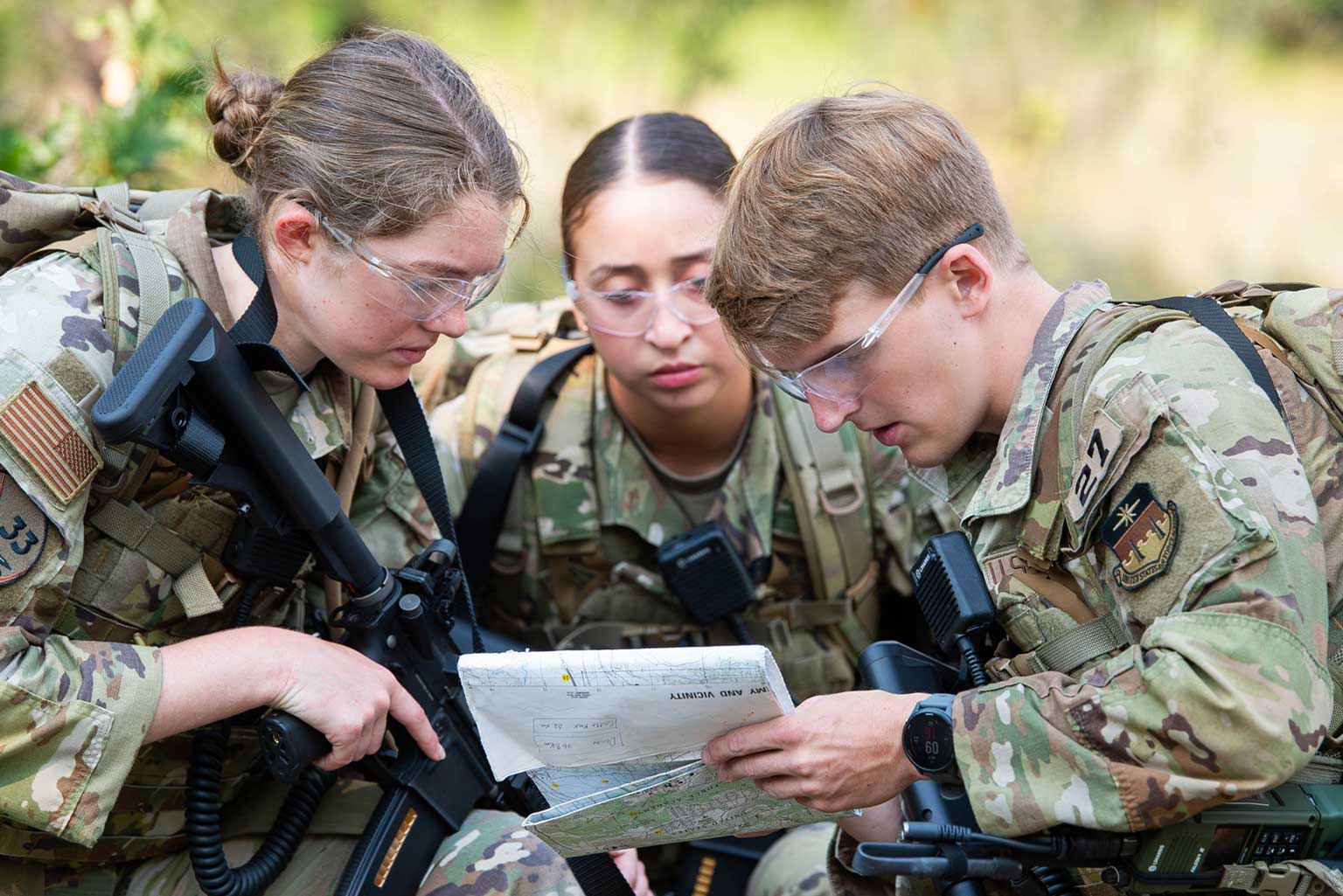
Cadet 2nd Class Micaela Martz, Cadet 1st Class Alejandra Tirado-Elias, and Cadet 2nd Class Derek Weissinger conduct a map reconnaissance during the Cadet Warfighter Instructor Course at the U.S. Air Force Academy, Colo., Aug. 1, 2025. These cadets planned and led a squad in a mock ambush, gaining the skills and confidence to train underclassman cadets in basic warfighting tasks to help improve future military training at the Academy. (U.S. Air Force photo by Dylan Smith)
Cadets are better prepared to lead future training
CWIC left a significant impression on the cadets, who expressed enthusiasm for the practical skills and leadership experience gained. Their feedback highlights the program’s success in preparing them to lead future training for their peers.
“Learning from Green Berets — true subject matter experts — was amazing,” said Cadet 2nd Class Derek Weissinger, and a team leader for the culminating squad-level situational training exercise (SQD STX). “It showed me how to be a more effective trainer and better leader to support my teammates at the squad level. This experience will help me make training at the Academy more relevant.”
Weissinger also reflected on the immediate lessons from the exercise.
“The biggest thing that I learned was how to keep command in the fog of war, specifically when we were setting up our ambush and doing the patrol before the ambush,” said Weissinger. “A lot of things weren’t very certain… and what I learned was, it’s still important just to choose something, to make a decision, instead of being paralyzed by indecision.”
Martz stressed that she is now better prepared to teach foundational warfighting skills to other cadets.
“During CWIC, we were taught to be adaptable and think critically under pressure,” said Martz. “CWIC has helped us become more effective instructors and leaders. This training will help us better teach the Cadet Wing foundational warfighter skills, better preparing us to fight and win our Nation’s wars once we earn our commissions.”
Learn more about Academy military training and see more photos of CWIC on Flickr.